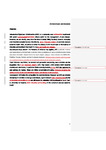Effects of chlorhexidine mouthwash on the oral microbiome

Date
2021-10Author
Subject
Metadata
Show full item recordAbstract
INTRODUCTION/OBJECTIVES: Chlorhexidine (CHX) is a commonly used mouthwash with potent anti-microbial effects useful for the management of oral disease. However, we are moving away from the view of simply 'killing' bacteria, towards managing oral microbial ecosystems (oral microbiome), as an integrated system, to promote oral and systemic health. Here, we aimed to review the effects of CHX mouthwash on the balance of microbial communities in the mouth in vivo in oral health and disease. SOURCES AND STUDY SECTION: The hierarchy of evidence was applied, with systematic reviews and randomised controlled trials consulted where available and case controlled studies being described thereafter. Search terms for each subject category were entered into MEDLINE, PubMed, Google Scholar and the Cochrane database. Focussing on metagenomics studies provides unique overview of the oral microbiome as an integrated system. DATA: Evidence was limited, but several next generation sequencing case-controlled studies suggested that in an integrated system, CHX may cause a shift towards lower bacterial diversity and abundance, in particular nitrate-reducing bacteria in vivo. CHX also appeared to alter salivary pH, lactate, nitrate and nitrite concentrations in saliva. Evidence regarding the effects of CHX on the oral microbiome during oral disease is still emerging. CONCLUSIONS: CHX alters the composition the oral microbiome. However, as CHX use remains widespread in dentistry to manage oral disease, urgent research using metagenomics studies of microbial communities in vivo are still needed to determine CHX mouthwash is 'good', 'bad' or otherwise for bacteria, in the context of oral and systemic health.
Collections
Publisher
Place of Publication
Journal
Volume
Pagination
Publisher URL
Number
Recommended, similar items
The following license files are associated with this item:


